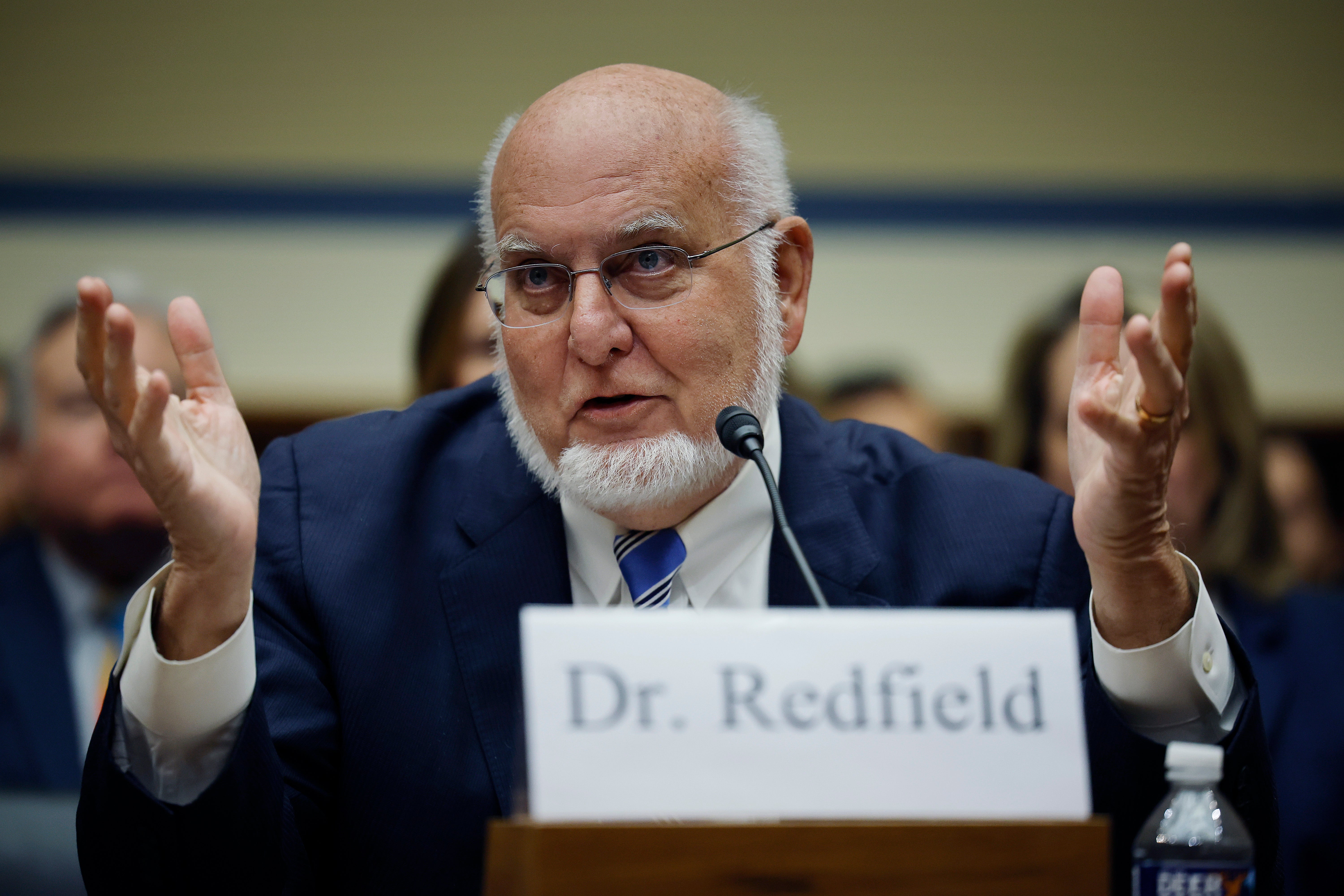Former director of the CDC predicts the next pandemic will be from bird flu
While mortality from Covid-19 was 0.6 per cent, Robert Redfield says bird flu mortality likely to be ‘somewhere between 25 and 50 per cent’
Your support helps us to tell the story
From reproductive rights to climate change to Big Tech, The Independent is on the ground when the story is developing. Whether it's investigating the financials of Elon Musk's pro-Trump PAC or producing our latest documentary, 'The A Word', which shines a light on the American women fighting for reproductive rights, we know how important it is to parse out the facts from the messaging.
At such a critical moment in US history, we need reporters on the ground. Your donation allows us to keep sending journalists to speak to both sides of the story.
The Independent is trusted by Americans across the entire political spectrum. And unlike many other quality news outlets, we choose not to lock Americans out of our reporting and analysis with paywalls. We believe quality journalism should be available to everyone, paid for by those who can afford it.
Your support makes all the difference.The former director of the US Centers for Disease Control and Prevention (CDC), Robert Redfield, has said that the next pandemic could be from bird flu.
The World Health Organization recently announced the first human death from bird flu in Mexico, and the virus has been found in cattle across the US.
“I really do think it’s very likely that we will, at some time, it’s not a question of if, it’s more of a question of when we will have a bird flu pandemic,” Redfield told NewsNation on Friday.
He added that the mortality rate is likely to be much higher from bird flu compared to Covid-19.
While the mortality rate was 0.6 per cent for Covid-19, Redfield said the mortality for the bird flu would probably be “somewhere between 25 and 50 per cent.”

In late May, the CDC found the third case of a person diagnosed with bird flu since March, The Hill reported. The three cases were found in farmworkers but were unrelated, with symptoms including a cough and pink eye.
There’s nothing to suggest that the virus is spreading between humans.
Researchers have found that five amino acids have to change their key receptor in order for bird flu to have the disposition to connect to a human receptor. It would subsequently be able to spread between humans like Covid-19.
“Once the virus gains the ability to attach to the human receptor and then go human to human, that’s when you’re going to have the pandemic,” Redfield told NewsNation.
“I think it’s just a matter of time,” he added.
Redfield said that he doesn’t know how long it will take for the necessary amino acids to change, but he added that he’s concerned about it being detected in cattle across the states.
More than 40 cattle herds have been found to have the virus. The CDC is following wastewater treatment sites to figure out where the virus is located but it has said that the current risk to the public remains low.
While cattle live in the vicinity of pigs, and the virus can evolve from pigs to humans, Redfield argued that the more severe risk is that the virus could be grown in a lab.
“I know exactly what amino acids I have to change because in 2012, against my recommendation, the scientists that did these experiments actually published them,” he told NewsNation. “So, the recipe for how to make bird flu highly infectious for humans is already out there.”

Join our commenting forum
Join thought-provoking conversations, follow other Independent readers and see their replies
Comments